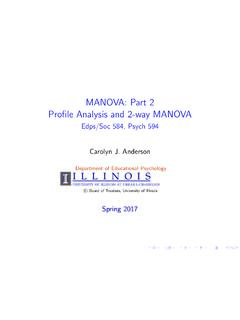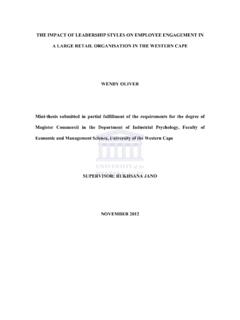Transcription of The Nature of Critical Thinking 51711 - College of Education
1 The Nature of Critical Thinking : An Outline of Critical Thinking Dispositions and Abilitiesi Robert H. Ennis Emeritus Professor, University of Illinois Last Revised, May, 2011. Critical Thinking is reasonable and reflective Thinking focused on deciding what to believe or do. This definition I believe captures the core of the way the term is used in the Critical Thinking movement. In deciding what to believe or do, one is helped by the employment of a set of Critical Thinking dispositions and abilities that I shall outline. These can serve as a set of comprehensive goals for a Critical Thinking curriculum and its assessment. Usefulness in curriculum decisions, teaching, and assessment, not elegance or mutual exclusiveness, is the purpose of this outline. For the sake of brevity, clarification in the form of examples, qualifications, and more detail, including more criteria, are omitted, but can be found in sources listed below, but most fully in my Critical Thinking (1996a).
2 This outline is the encapsulation of many years of work in the elaboration of the simple definition of Critical Thinking given above, and it distinguishes between Critical Thinking dispositions and abilities. It is only a Critical Thinking content outline. It does not specify grade level, curriculum sequence, emphasis, teaching approach, or type of subject-matter content involved (standard subject-matter content, general knowledge content, streetwise-knowledge content, special knowledge content, etc.). For assessment purposes it can only provide a basis for developing a table of specifications and the preparation of assessment rubrics. Critical Thinking Dispositions Ideal Critical thinkers are disposed to 1. Care that their beliefs be trueii, and that their decisions be justified; that is, care to "get it right".
3 To the extent possible; including to a. Seek alternative hypotheses , explanations, conclusions, plans, sources, etc.; and be open to them b. Consider seriously other points of view than their own c. Try to be well informed d. Endorse a position to the extent that, but only to the extent that, it is justified by the information that is available e. Use their Critical Thinking abilities 2. Care to understand and present a position honestly and clearly, theirs as well as others';. including to a. Discover and listen to others' view and reasons b. Be clear about the intended meaning of what is said, written, or otherwise communicated, seeking as much precision as the situation requires c. Determine, and maintain focus on, the conclusion or question d. Seek and offer reasons e. Take into account the total situation f.
4 Be reflectively aware of their own basic beliefs 1. 3. Care about every person. (This one is an auxiliary, not constitutive, disposition. Although this concern for people is not constitutive, Critical Thinking can be dangerous without it.) Caring Critical thinkers a. Avoid intimidating or confusing others with their Critical Thinking prowess, taking into account others' feelings and level of understanding b. Are concerned about others' welfare Critical Thinking Abilities The following abilities numbered 1 to 3 involve basic clarification; 4 and 5, the bases for a decision;. 6 to 8, inference; 9 and 10, advanced clarification; and 11 and 12, supposition and integration. Abilities13 to 15 are auxiliary abilities, not constitutive of Critical Thinking , but very helpful. Ideal Critical thinkers have the ability to: i.
5 Is this what you are (Basic Clarification, 1 to 3) saying:_____? 1. Focus on a question: j. Would you say more about that? a. Identify or formulate a question b. Identify or formulate criteria for (Two Bases for a Decision: 4 and 5). judging possible answers 4. Judge the credibility of a source. c. Keep the question and situation Major criteria (but not necessary in mind conditions): a. Expertise 2. Analyze arguments: b. Lack of conflict of interest a. Identify conclusions c. Agreement with other sources b. Identify reasons or premises d. Reputation c. Ascribe or identify simple e. Use of established procedures assumptions (see also ability 10) f. Known risk to reputation (the c. Identify and handle irrelevance source's knowing of a risk to d. See the structure of an argument reputation, if wrong). e. Summarize g.
6 Ability to give reasons h. Careful habits 3. Ask and answer clarification and/or challenge questions, such 5. Observe, and judge observation as: reports. Major criteria (but not a. Why? necessary conditions, except for the b. What is your main point? first): c. What do you mean by ? a. Minimal inferring involved d. What would be an example? b. Short time interval between e. What would not be an example observation and report (though close to being one)? c. Report by the observer, rather f. How does that apply to this case than someone else (that is, the (describe a case, which appears report is not hearsay). to be a counterexample)? d. Provision of records g. What difference does it make? e. Corroboration h. What are the facts? f. Possibility of corroboration g. Good access 2. h. Competent employment of (d) Historical claims that certain technology, if technology applies things happened (including i.)
7 Satisfaction by observer (and criminal accusations). reporter, if a different person) of (e) Reported definitions the credibility criteria in Ability (f) Claims that some proposition # 4 above is an unstated, but used, reason (Note: A third basis is your own established (2) Characteristic investigative conclusions.) activities (a) Designing experiments, (Inference, 6 to 8). including planning to control 6. Deduce, and judge deduction: variables a. Class logic (b) Seeking evidence and b. Conditional logic counterevidence, including c. Interpretation of logical statistical significance terminology, including (c) Seeking other possible (1) Negation and double negation explanations (2) Necessary and sufficient (3) Criteria, the first four being condition language essential, the fifth being desirable (3) Such words as "only", "if and (a) The proposed conclusion only if", "or", "some", "unless", would explain or help explain the and "not both".
8 Evidence d. Qualified deductive reasoning (b) The proposed conclusion is (a loosening for practical consistent with all known facts purposes). (c) Competitive alternative explanations are inconsistent 7. Make material inferences with facts (roughly induction ): (d) A competent sincere effort a. To generalizations. Broad has been made to find supporting considerations: and opposing data, and (1) Typicality of data, including alternative hypotheses valid sampling where appropriate (e) The proposed conclusion (2) Volume of instances seems plausible and simple, (3) Conformity of instances to fitting into the broader picture generalization (4) Having a principled way of 8. Make and judge value judgments dealing with outliers Important factors: b. To explanatory hypotheses a. Background facts (IBE: inference-to-best- b.)
9 Consequences of accepting or explanation ): rejecting the judgment (1) Major types of explanatory c. Prima facie application of conclusions and hypotheses : acceptable principles (a) Specific and general causal d. Alternatives claims e. Balancing, weighing, deciding (b) Claims about the beliefs and attitudes of people (Advanced Clarification, 9 and 10). (c) Interpretation of authors' 9. Define terms and judge definitions, intended meanings using appropriate criteria 3. Three basic dimensions are form, (called assumptions of the argument . function (act), and content. A fourth, by Hitchcock (1985)). more advanced dimension is (3) Used assumptions (judged by handling equivocation. hypothesis-testing criteria, Ennis 1982), a. Definition form. For criteria for 1 called assumptions of the arguer by through 4 and 6, see Ennis (1996, Ch 12 Hitchcock (1985).
10 & 13). For #5 see Ennis (1964, 1969c). (1) Synonym (Supposition and Integration, 11 and 12). (2) Classification 11. Consider and reason from premises, (3) Range reasons, assumptions, positions, (4) Equivalent-expression and other propositions with (5) Operational which they disagree or about (6) Example and non-example which they are in doubt, without b. Definitional functions (acts) letting the disagreement or doubt (1) Report a meaning (criteria: the interfere with their Thinking five for an explanatory hypothesis) ("suppositional Thinking "). (2) Stipulate a meaning (criteria: convenience, consistency, avoidance of 12. Integrate the dispositions and other impact equivocation) abilities in making and defending a (3) Express a position on an issue decision (positional definitions, including "programmatic" and (Auxiliary abilities, 13 to 15).



